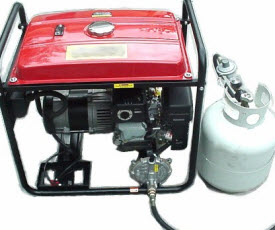What to Consider When Buying a Generator to save money
Generators are a fantastic tool for providing a power source when the electricity is down, or you are off the grid. However, when it comes to purchasing a generator, there are endless options available. It is therefore important to understand the basics, so you can be sure you are choosing the generator that best suits your budget and needs.
Generators generally come in two main types; the gas powered portable generator and natural gas powered, stationary generator. Although the function is the same for both, models will vary greatly in price, power, and other features, so you should carefully consider your options before making a decision.
Navigate your way through the array of generators for sale by reading this quick guide on the types of generators available, and what factors to consider when looking to purchase one for yourself.
Before Buying Assess Your Needs
Before deciding if a stationary generator or portable one is best for you, you must first figure out the wattage necessary to power everything you wish to run off of the generator. Figure out what is required by estimating, using standard wattages for each appliance you wish to power. Keep in mind, it might be best to stick to the basics as a small window AC unit requires 1000W to run, and a standard fridge can take up to 600W. It is important to develop a plan for what necessary appliances should be powered and choose a generator to accommodate. Also remember to never run the generator at over 80% capacity, so be sure to take that into account when choosing yours.
Features of a Portable Generator
Portable generators are often more cost efficient than their permanent counterparts. However, there are a few points to remember when looking at them. Portable generators are powered by petrol and require anywhere from 8-22 gallons a day to run. That can become troublesome when trying to provide power for extended periods of time, not to mention a challenge of keeping that much fuel on hand.
Although portable generators are smaller and much easier to store, it is important to keep in mind that they require an electric start. In addition to this, some models don’t include the battery; which is another incurred cost; and wheels may not be provided either, so portability isn’t always ideal. Consider useful features like automatic shutoff when low on fuel and carbon monoxide detection sensors.
Features of a Stationary Generator
Stationary or permanent generators are units that are permanently wired to a building and are designed to turn on automatically when grid power fails. Stationary generators are powered by natural gas, therefore, can provide a more reliable power source for much longer periods of time, a 250lb. tank can provide power for 8-15 days. A bigger investment may be required to purchase and install a stationary unit. However, it is more dependable and can power appliances for a far longer time, making it ideal for buyers looking only to use their generator to provide power to their homes.
Using a Generator Safely
Regardless of the type of generator selected it is important to use it safely. Generators require a transfer switch that is wired to the building’s circuit box, eliminating any need for power cords, and protecting the system from a surge when the power has been restored. Be cautious not to overload the breaker as that could trip the circuit and cause power loss, as well as cause appliances to run hot and not safely.
Always be sure generators are set up at a safe distance from the building, well away from any windows or doors as they emit dangerous gasses, proper ventilation is required for safe use.
Have your generator regularly maintained by a technician to ensure it is in good working order.






No Comment